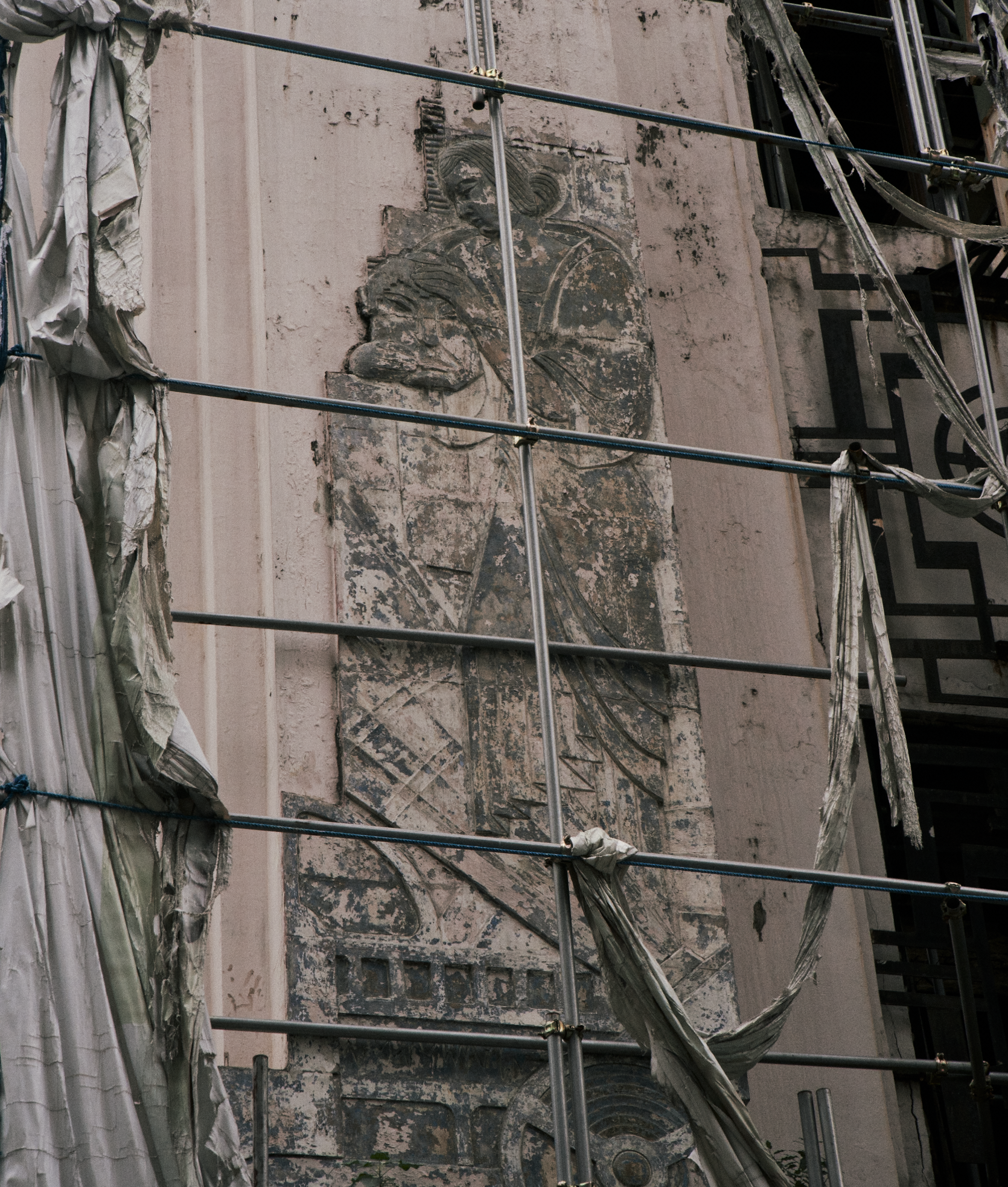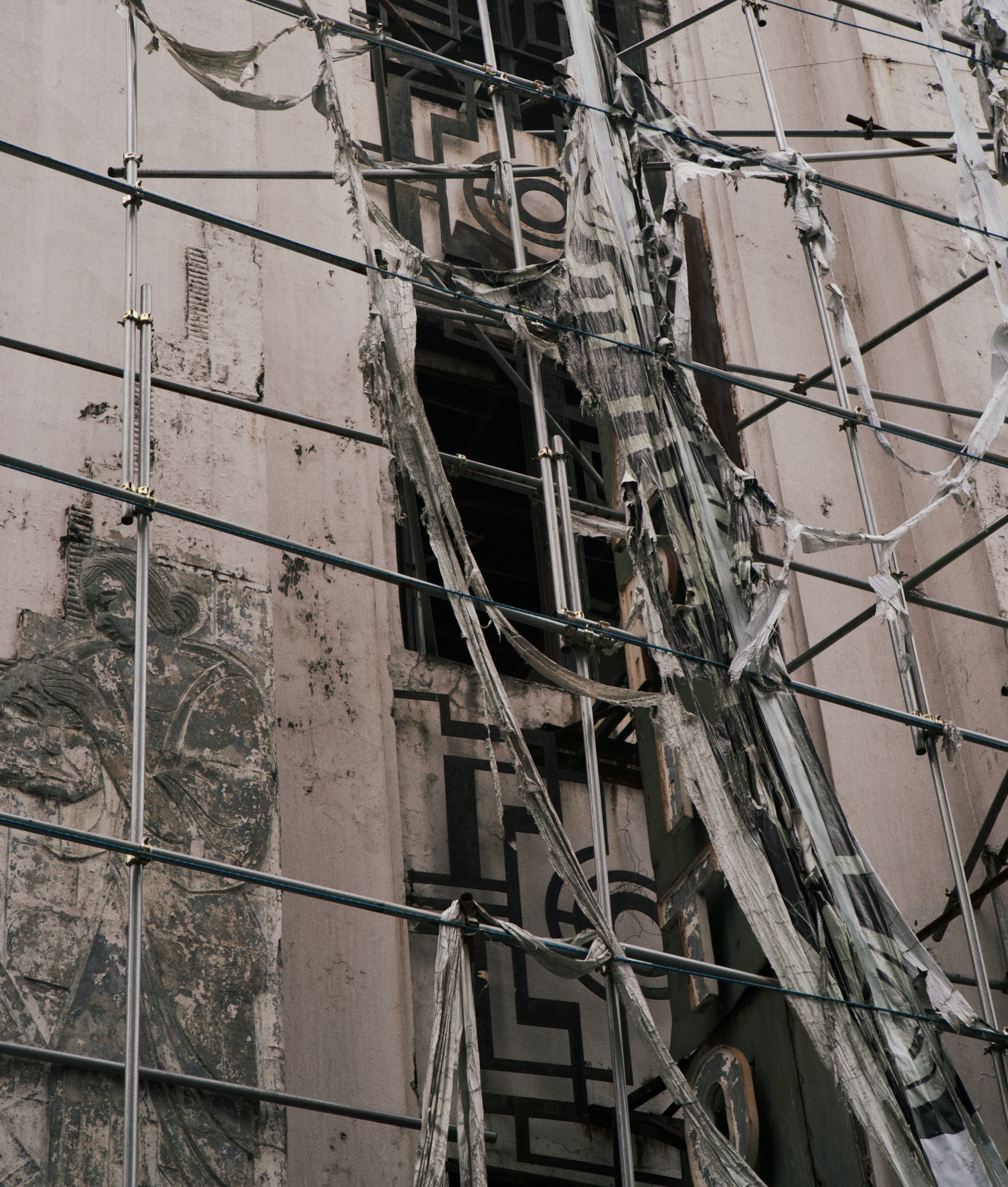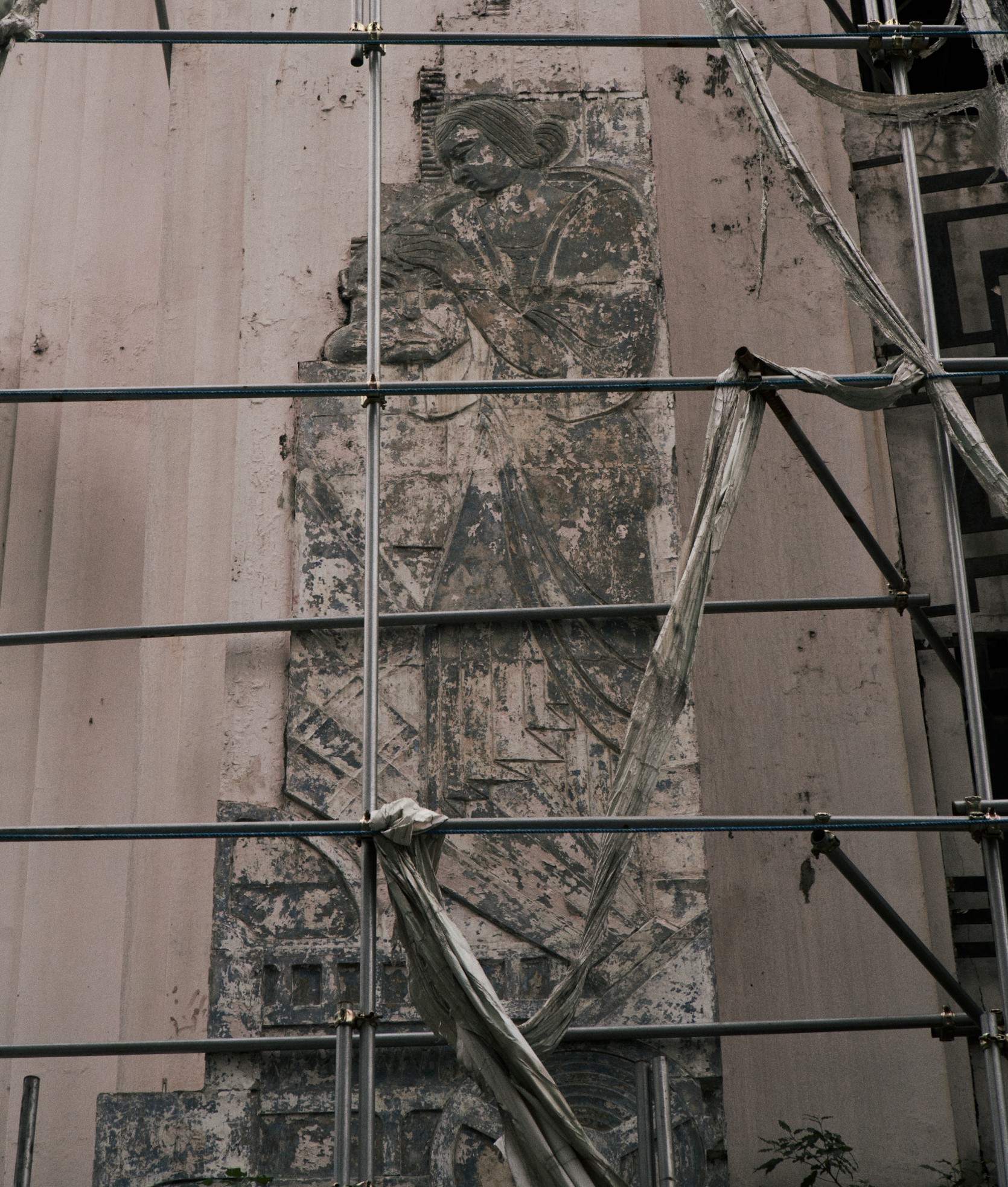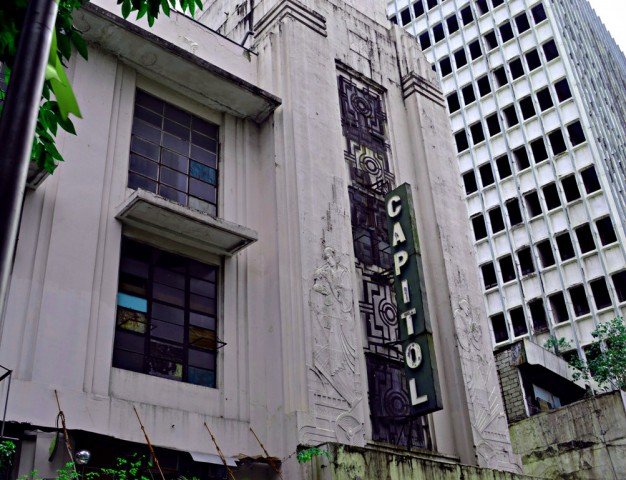Capitol Theater on Calle Escolta
Escolta Street in Manila
Nakpil, a Filipino architect with a National Artist Award for Architecture, studied engineering at the University of the Philippines and the University of Kansas. He looked as well in Fontainebleau and received an MA in architecture from Harvard University.
Nakpil began as a junior partner of Andres Luna in 1926 and was at the forefront of Modernism in Philippine architecture. He vigorously promoted architecture that was "adjusted to the country's climatic and environmental conditions." This value is seen in his advancement and protection efforts of native building materials and the modern transformation of indigenous house standards.
In Metro Manila, it's more common to see buildings being demolished to make way for more commonplace examples of real-estate development. Some of the heritage buildings lost in recent years include the historical structure of the Capitol Theater on Escolta Street.
The Capitol Theater was one of the go-to cinemas and performance venues when Escolta was the bustling hub of commerce and culture in the Philippines. The pre-war Art Deco building featured a remarkable façade with geometric lines, intricate grillwork, and proportional design. The columns featured low-relief figures of Filipina muses—one holding a mask to represent theater and one holding a lyre to describe music.
Before the posh neighborhoods of Makati and Taguig, Escolta Street was Manila's premier commercial location. Although it may seem forgotten by today's generation, many believe this historical street still has the charm to attract people and revive commercial activities.
Escolta is a part of the cultural heritage, built by Filipino architects from the early 20th century to the 1950s. There is a range from neo art deco to more modernist buildings. Escolta street was a cradle of commercial establishments such as banks, cinemas, and department stores, among others housed in art deco-style buildings. This architecture was dominant in the Philippines in the 1920′s and 1930′s designed by some of the country's renowned architects: Andres Luna de San Pedro, Juan Nakpil, Jose Maria Zaragoza, Fernando Ocampo, Luis Araneta, Tomas Arguelles, Carlos Arguelles, and Leandro Locsin.





